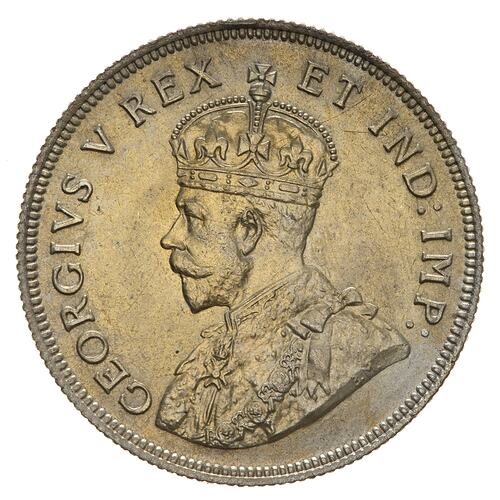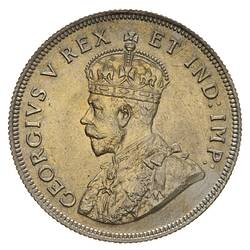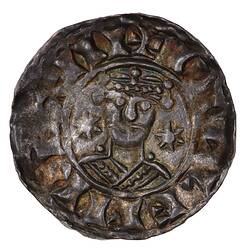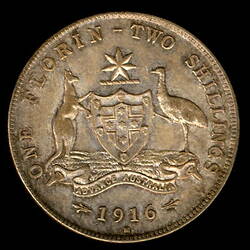Summary
1 Shilling, Issued by, East African Currency Board, British Colony of Kenya, 1921
Minted by Royal Mint, London
This coin was also used in Uganda and Tanganyka from 1922
Obverse Description
Crowned and draped bust of the King facing left, the King is wearing the Imperial Crown and the ermine Robe of State, the Collar of the Most Noble Order of the Garter, and the Badge of the Most Honourable Order of the Bath; around, GEORGIVS V REX ET IND: IMP:; artist's initial's, BM, on bust truncation
Reverse Description
Within a partial line circle which ends in leaves either side of the denomination, a lion advancing to right with a tall pointed mountain in the background; in exergue in three lines, 1 / SHILLING / 1921; around above, EAST AFRICA
Edge Description
Milled
Significance
The rupee of British India had come to be the coinage standard of the Protectorate of East Africa and Uganda (largely because it was used to pay Indian workers on the Kenya-Uganda Railway). In 1920 the East African Protectorate became the Colony of Kenya, the East Africa Currency Board was set up in December 1919. It introduced a new decimal system based on 100 cents to one East African Florin in 1920, abandoning yet retaining the old rupee system - the florin being the same weight as the Indian rupee. This was very short lived, on 1 May 1921 it was replaced by a system based on 100 cents to 1 East African Shilling (this coin). This system was expanded on 1 January 1922 to be the official Currency of Kenya, Uganda and Tanganyka.
More Information
-
Collecting Areas
-
Acquisition Information
Transfer from Melbourne Branch of Royal Mint, Royal Mint, London, 1978
-
Date Issued
1921 AD
-
Issued By
East African Currency Board, British East Africa (Kenya), 1921
-
Mint
-
Artist
-
Denomination
-
Material
Silver
-
Axis
12
-
Classification
-
Category
-
Discipline
-
Type of item
-
Dimensions
28 mm (Outside Diameter), 7.772 g (Weight)
-
Shape
Round
-
References
KM#21 Remick, Jerome Guidebook & Catalogue of British Commonwealth Coins, p. 159-165 [Link 1] (Central Bank of Kenya - History of Kenyan Currency) 51st & 52nd Annual Report of the Deputy Master and Comptroller of the Royal Mint, 1920 & 1921, p.15
[Book] Bruce, Colin R. 2009. 2009 Standard Catalogue of World Coins 1901 - 2000.
-
Keywords







